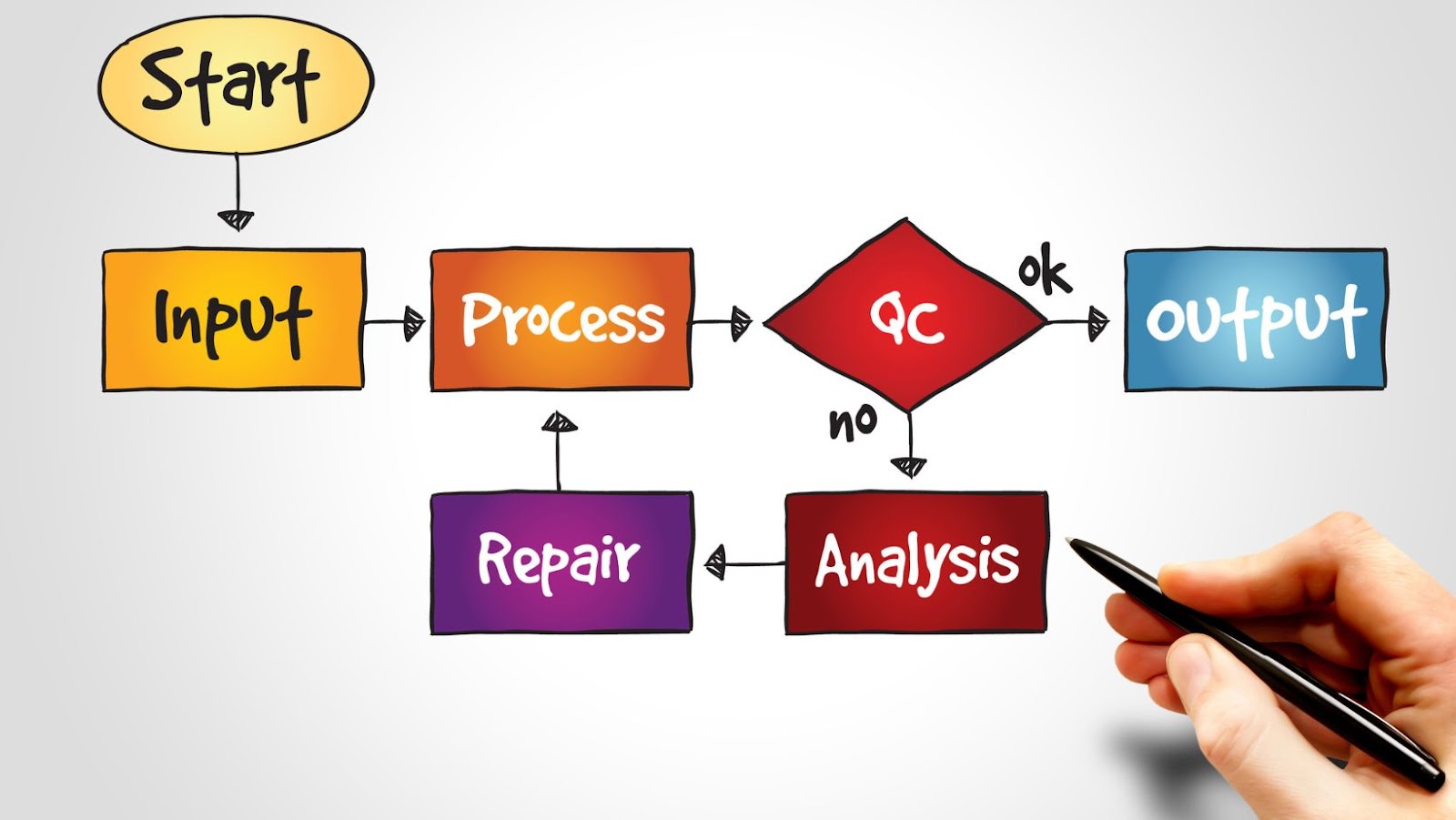To find out more about BPS, there are a few options available to you.
Firstly, you can check out the official website of the BPS, which has detailed information on the organisation’s history, mission, and values. Additionally, you can explore the various publications, journals, and research conducted by BPS members and affiliates, as well as attend conferences or seminars hosted by the organisation.
Another approach is to network with professionals in your field who are members of BPS, as they can provide insight and guidance on the organisation and its initiatives.
Lastly, you can join BPS as a member and gain access to a wealth of resources, including training opportunities, career development support, and networking events.
About BPS
BPS, or Business Process Services, is an important concept in many organisations today. Oftentimes, businesses can benefit from the use of BPS, as it can help them streamline and optimise tasks that are part of their everyday processes.
In this section, we’ll look into the details of BPS and how organisations can benefit from it.
BPS Fecha Y Lugar De Cobro
BPS stands for the Bank Payment Obligation Scheme, which is an irrevocable undertaking given by a bank to another bank that payment will be made on a specified future date. The BPS is typically used for trade finance transactions to secure payments for the buyer and the seller involved in the transaction. The BPS allows both parties to reduce the risk associated with international trade transactions.
If you want to find out more about BPS, you can contact your bank or financial institution and inquire about their offerings. Additionally, you can conduct research online or seek advice from a financial advisor to determine if the BPS is the right choice for your business needs. Understanding the ins and outs of the BPS can help you navigate international trade transactions with greater ease and confidence.
The importance of BPS
BPS or Biological Productivity System is a way of measuring and managing the biological productivity of soils. With BPS, farmers and gardeners can understand the health of their soil and take appropriate measures to improve it. The system helps in identifying the three biological processes – photosynthesis, respiration, and fermentation- and keeping them in balance for optimum results. A healthy soil ecosystem leads to better crop yields, nutrient-rich food, and reduced use of fertilisers, pesticides, and herbicides.
If you want to learn more about BPS, there are several resources available online. You can check out online courses, books, and research papers that explain the system and its benefits in detail. You can also join local farming communities, seed exchanges, and gardening clubs to connect with other enthusiasts who practise BPS or related methods.
Who needs to be concerned about BPS?
BPS or Bisphenol S is a chemical similar to Bisphenol A (BPA) found in plastic products such as water bottles, food containers, and thermal receipts. Studies have shown that BPS may have similar health hazards to BPA, such as endocrine disruption and developmental disorders.
Those who frequently use plastic products or handle thermal receipts may be at risk of exposure to BPS. Infants, pregnant women, and individuals with chronic diseases are particularly vulnerable.
It is important to stay informed and cautious when using plastic products, and to consider using alternatives such as glass, stainless steel, or BPA/BPS-free plastics. For more information on BPS and how to reduce your exposure, consult with your healthcare provider or environmental organisations such as the Environmental Working Group.
Understanding BPS better
BPS stands for ‘bytes per second’, and is a measure of the speed of a data transfer rate. Knowing about it is important for anyone who deals with computer networks and when considering internet speeds.
In this article, we’ll explore what BPS is and how it works, as well as any other questions you may have about it.
What are the most frequently asked questions about BPS?
BPS, or Bisphenol S, is a common substitute for BPA in consumer products. Here are some of the most frequently asked questions about BPS:
1. Is BPS safer than BPA? Studies have shown that BPS may have similar health effects to BPA.
2. What products contain BPS? BPS can be found in many consumer products, including plastic containers, thermal paper receipts, and some personal care products.
3. How can I avoid exposure to BPS? You can reduce your exposure to BPS by avoiding products that contain it or by choosing products made from alternative materials.
4. Does BPS pose a risk to the environment? Studies have found that BPS can be toxic to aquatic organisms and may accumulate in soil and water.
To find out more about BPS, talk to your doctor or a toxicology expert, and research the latest studies and reports.
Pro Tip: Stay informed about the chemicals in the products you use and choose safer alternatives to reduce your exposure to potentially harmful substances.

What are some key points to know about BPS?
BPS or Bisphenol S is a chemical compound that is widely used in consumer products as a replacement for Bisphenol A (BPA), which has been linked to health concerns. While BPS is considered a safer alternative, there are some key points that you should be aware of before using products that contain this compound.
Here are some key points to know about BPS:
- BPS is structurally similar to BPA and has similar hormone-disrupting properties.
- BPS is not free of health concerns, and studies have linked it to reproductive and developmental problems in animals.
- Products labelled as “BPA-free” may contain BPS or other bisphenol compounds.
- The long-term effects of BPS exposure on human health are not yet fully understood, and more research is needed to better understand its potential risks.
If you want to find out more about BPS and its implications for human health, it’s recommended that you consult reliable sources of information such as government agencies, scientific journals, or reputable health organisations.
How can I access more information about BPS?
BPS (Brazilian Payment System) is a complex and comprehensive financial system used in Brazil. To access more information about BPS, there are a few options available:
1. Research online: There are many online resources available, including official government websites, financial news websites, and academic research papers.
2. Consult with financial experts: Financial experts and industry professionals will have in-depth knowledge about BPS and can provide further insights.
3. Attend conferences and seminars: Conferences and seminars related to finance and banking are a great way to gain comprehensive knowledge about BPS and meet industry professionals.
By conducting thorough research and consulting with professionals, you can access more information about BPS and gain a better understanding of this complex financial system in Brazil.
Resources for BPS information
If you are looking for information about BPS, one of the best ways to find out more about the topic is to look into the various resources available. From research papers and books to online forums and tutorials, there are several sources to look into to learn more about BPS.
In this section, we will explore some of these resources and what they have to offer.
Online sources for BPS information
If you are looking for reliable sources of information on BPS (Benzophenone), there are several online resources available that can help you understand the potential risks and benefits of this chemical compound.
Here are some of the best online sources for BPS information:
- Environmental Working Group (EWG): The EWG offers a comprehensive database of chemicals and their potential health effects. Their website includes a detailed profile on BPS with information on its uses, health hazards, and regulatory status.
- National Center for Biotechnology Information (NCBI): The NCBI offers scientific research studies and reviews related to BPS. Their website includes studies on the health effects of BPS exposure and other related scientific information.
- Agency for Toxic Substances and Disease Registry (ATSDR): This federal public health agency provides information on the potential health effects of exposure to BPS and other chemicals. Their website also includes information on how to reduce exposure to BPS and other harmful chemicals.
Pro tip: Always check multiple sources to verify the accuracy of the information you find online.
BPS consultants and professionals for expert advice
If you’re looking for expert advice on Business Process Services (BPS), BPS consultants and professionals are the best resources to turn to for guidance. These experts can provide valuable insights and recommendations based on their years of experience in BPS.
Here are some ways to find BPS consultants and professionals:
Do a Google search for “BPS consultants” or “BPS professionals.” You’ll find several options to choose from, along with their contact information.
Check out online directories like LinkedIn, Upwork, and Freelancer. These platforms have a wide range of freelancers and professionals specialising in BPS.
Attend industry events and conferences to meet and network with BPS experts in person. This is an excellent way to learn about new trends, best practices, and emerging technologies in BPS.
Pro Tip: Before hiring a BPS consultant or professional, make sure to check their credentials, reviews, and testimonials to ensure that they have the necessary expertise and experience to meet your needs.
BPS community forums and discussion groups
If you are looking to find out more about BPS, the community forums and discussion groups can be excellent resources for information and support. These forums allow people to discuss various topics related to BPS, including symptoms, treatments, and coping strategies.
Here are some BPS community forums and discussion groups to consider:
Inspire.com: Inspire is a community forum with over a million members. It has various groups, including BPS/IC support groups for people seeking information and support.
Reddit.com: Reddit has a subreddit called r/InterstitialCystitis where people share their BPS experiences, treatments, and questions.
HealthUnlocked.com: Health Unlocked is an online platform where people get information on various health conditions, including BPS.
By joining these online groups, you can connect with other people affected by BPS, share your experiences, learn about treatments and new research, and find comfort in knowing you are not alone.

Implementing BPS in your business
Business process modelling (BPS) is an important part of any business, as it allows stakeholders to understand the end-to-end process of a company and identify areas of potential improvement.
BPS implementation can help streamline operations, save valuable time and resources, and improve customer satisfaction. Knowing more about BPS can be beneficial in helping you make decisions on how to best implement it in your own business.
How to ensure compliance with BPS regulations
To ensure compliance with BPS regulations, it is essential to understand the guidelines and requirements set by BPS and to implement them into your business practices.
Here are some steps you can follow:
1. Identify the specific BPS regulations relevant to your industry and business.
2. Develop policies and procedures that align with BPS guidelines and requirements.
3. Train employees on BPS compliance and provide resources for ongoing education.
4. Assign a compliance officer or team to oversee implementation and ensure adherence to BPS regulations.
5. Regularly review and update your policies and procedures to reflect any changes in BPS guidelines.
To find out more about BPS and its regulations, visit their official website or contact a BPS representative for guidance and support.
What are some best practices for implementing BPS?
When implementing BPS (Business Process Standardization) in your business, it’s important to follow best practices to ensure a smooth transition and maximum benefits. Here are some best practices to consider:
Start with a thorough analysis of your current business processes to identify areas for standardisation and improvement.
Develop a clear and detailed plan that outlines the objectives, timelines, roles, and responsibilities.
Involve all stakeholders in the implementation process, including employees, managers, and partners.
Prioritise your efforts based on the level of impact, feasibility, and ROI.
Ensure effective communication and training to all stakeholders to ensure buy-in and a clear understanding of the standardisation process.
Monitor and evaluate the process regularly to identify further areas for improvement.
If you want to find out more about implementing BPS in your business, there are many resources available online such as industry forums, academic research papers, and case studies of companies that have successfully implemented BPS. Pro tip: Consider hiring a consultant or expert in BPS to guide you through the process and provide additional insights and knowledge.
How to continuously improve BPS performance
Business Process Services (BPS) can help organisations streamline their operations, reduce their costs and improve their performance. Here are some tips on how to continuously improve your BPS performance:
1. Measure your performance: Measure your BPS service using key performance indicators (KPIs) such as cycle time, accuracy, customer satisfaction, and productivity to identify areas for improvement.
2. Leverage Automation: Automate routine processes with robotic process automation (RPA) to reduce errors and cycle time, which can result in substantial cost savings.
3. Implement Best Practices: Continuously learn from industry best practices and implement them in your BPS. Consider taking courses, attending seminars and webinars, and partnering with consultants to get new insights and ideas.
4. Monitor Industry Trends: Stay updated with the latest trends in the BPS industry and proactively adapt to them to stay ahead of the competition.
By following these steps, you can improve the efficiency and effectiveness of your BPS and achieve long-term success. Pro Tip: Regularly gather feedback from your team and clients to identify areas of improvement and ensure better performance.
Conclusion and next steps
Knowing about BPS is essential for anyone wanting to understand more about the banking system and how it works. In this article, you have seen how to find more information about BPS and some of the advantages it offers.
Now, it is time to take action and use the information provided here to start learning more about BPS. This article has been designed to help you get started and gain a better understanding of this banking procedure, so you can make the most out of what it has to offer.
Summarise key takeaways from the article
In conclusion, BPS or Building Performance Standards are a set of regulations aimed at reducing greenhouse gas emissions and improving energy efficiency in buildings.
The key takeaways from this article are:
- BPS focuses on new buildings and major renovations.
- BPS has been adopted in many cities around the world to mitigate climate change.
- BPS can help reduce energy costs for building owners and tenants.
If you want to find out more about BPS, you can contact your local government or visit their website to inquire about the specific regulations and incentives available in your area. Additionally, you can consult with professionals in the building and energy sectors to learn more about sustainable building practices and green building certifications.

Outline recommended next steps for readers
In conclusion, BPS is an intricate system with enormous benefits, and if you are interested in learning more about it, there are several next steps you can take:
1. Research: There is a wealth of information available online, from academic articles to professional blogs. Go through them to get a clearer understanding of what BPS is and its applications.
2. Attend conferences or workshops: By attending conferences or workshops, you can get hands-on experience of the BPS system in a practical setting.
3. Networking: Networking can be a vital aspect of discovering more about BPS. Connect with like minded individuals through online forums, LinkedIn groups, or attending events to learn more about BPS and its applications.
4. Consultation: If you are interested in using BPS for a specific application, a professional consultation with an expert in the field is recommended for guidance on the most effective approaches.
Taking any of these steps can set you on the right path to learning, understanding, and succeeding with BPS.
















